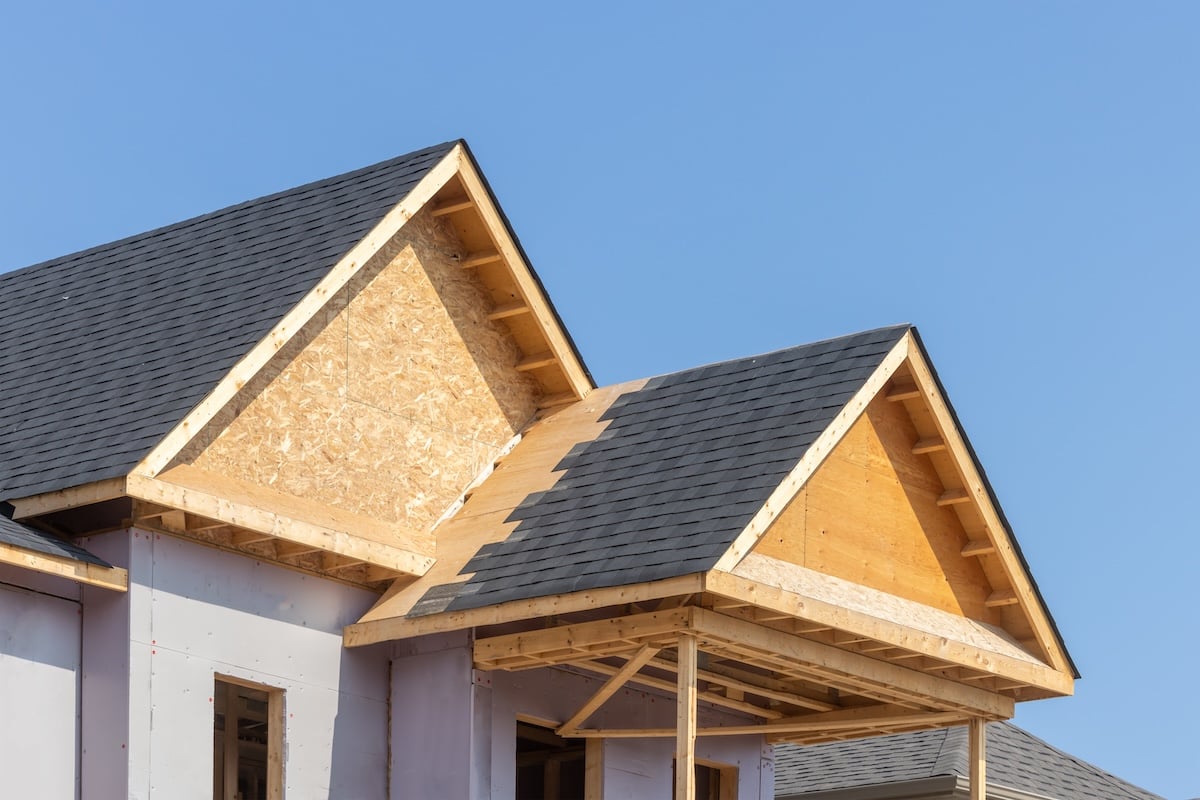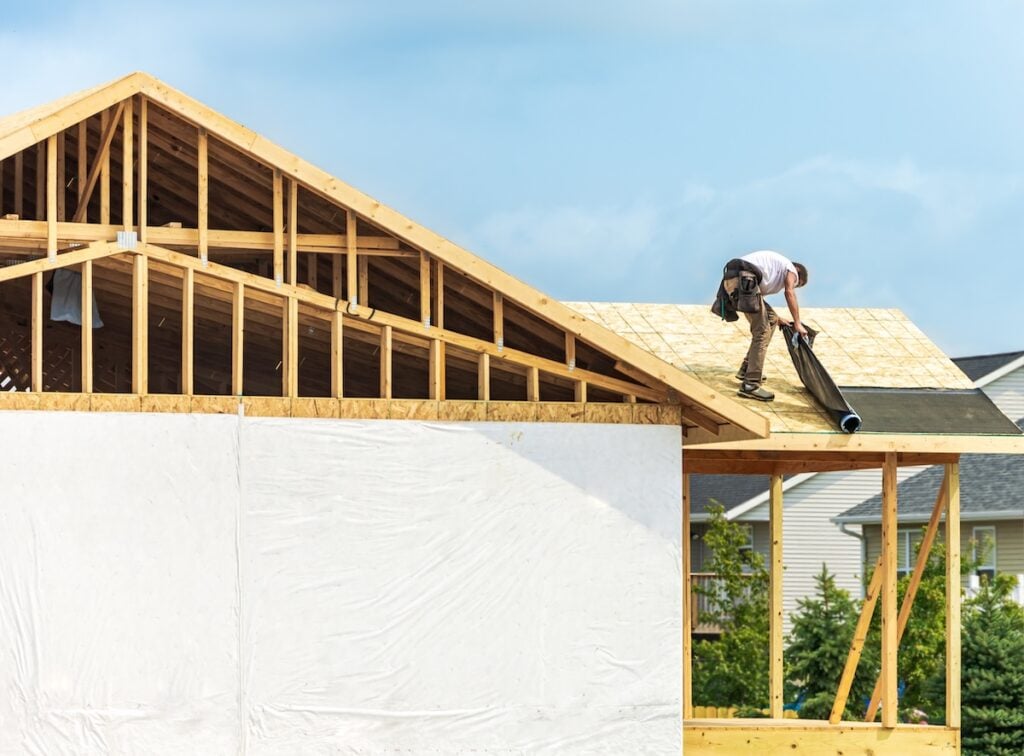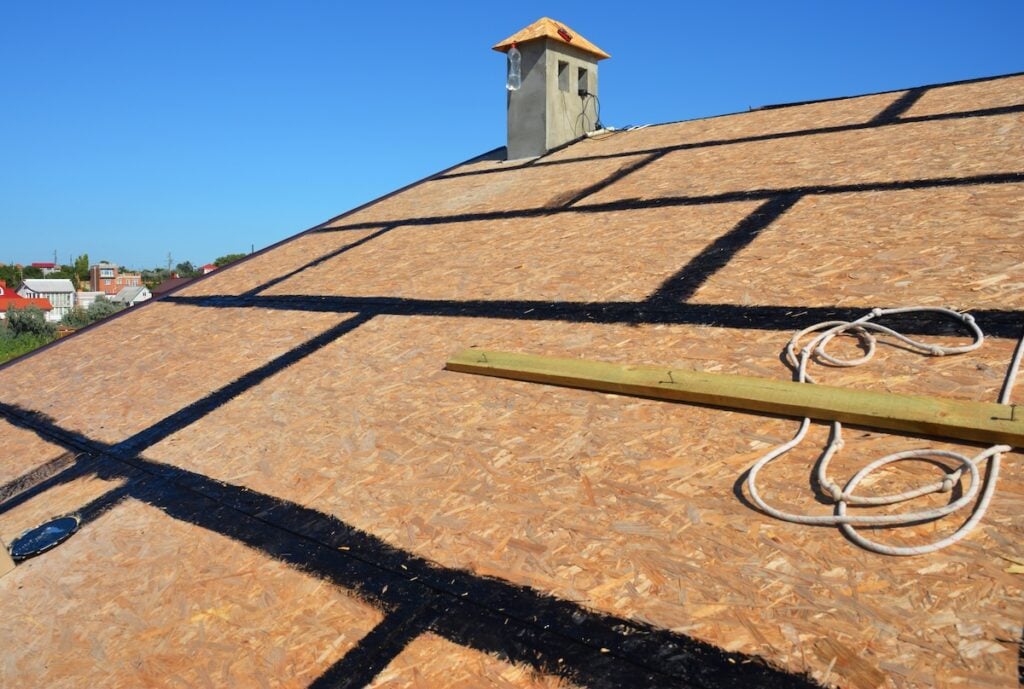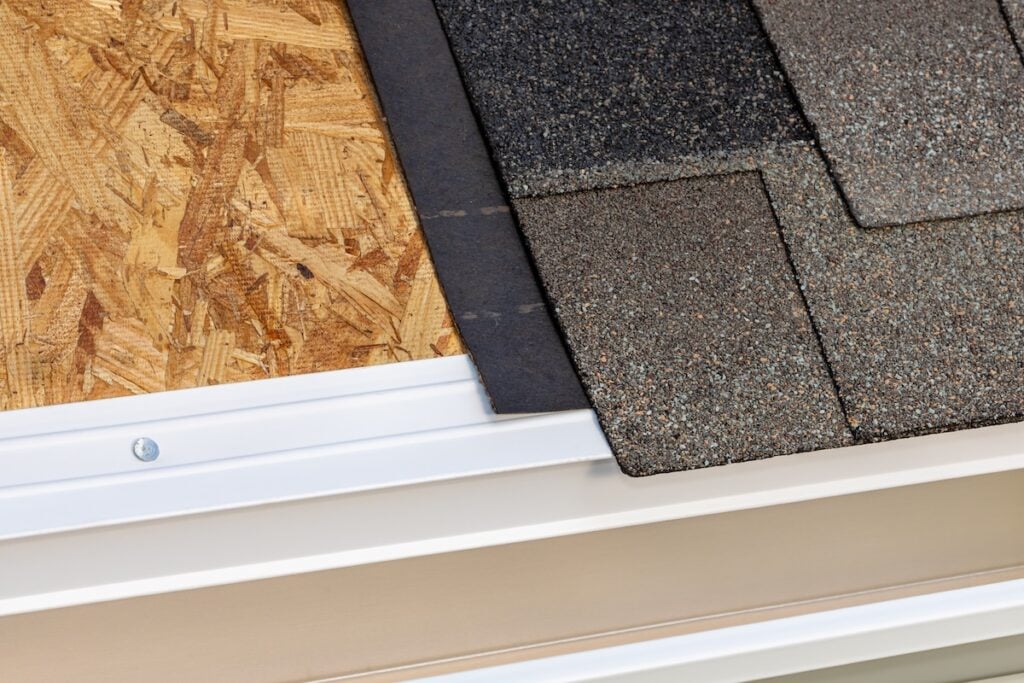
What Is Roof Sheathing? Materials & Purpose
August 01,2025
6 minutes Read
Roof sheathing is a critical component of your roofing system that acts as the base layer between your home’s framing and the shingles you see on top. It plays a key role in supporting the roof structure, providing a surface for underlayment and shingles, and enhancing overall durability.
- Sheathing supports roofing material and helps prevent structural sagging
- Different materials offer unique strengths and cost differences
- A damaged or rotting deck can compromise your entire roofing system
In this guide, we’ll cover what roof sheathing is, the most common materials used, and how it impacts your roof’s performance and longevity.
🤔 What Does Roof Sheathing Do?
Sheathing acts as the backbone of your roof. It provides a solid, uniform surface for attaching shingles, metal panels, or other roofing materials. Without it, your roof structure would lack the necessary strength to hold up under weight and weather.
Most roof sheathing is made of wood panels—typically oriented strand board (OSB) or plywood. These sheets are nailed directly to the roof trusses or rafters, forming a flat, continuous plane that supports the rest of the roofing layers.
❗️ Why Roof Sheathing Is So Important
While it may not be visible once your roof is complete, sheathing is one of the most important layers. If it fails, the rest of your roof is at risk.

- Structural support: Sheathing distributes the weight of shingles, snow, and wind loads evenly across the frame of the house.
- Surface for fasteners: It gives nails, staples, or screws a solid surface to grip when attaching underlayment, shingles, or metal panels.
- Moisture resistance: Some types of sheathing are moisture-treated to help prevent water absorption and rot if minor leaks occur.
- Fire resistance: Certain sheathing materials, especially those with coatings or fire-rated properties, can slow the spread of flames.
- Wind uplift protection: Properly installed sheathing helps your roof resist wind uplift by anchoring the roofing materials firmly in place.
🪵 Common Roof Sheathing Materials
Choosing the right type of sheathing depends on your budget, local building codes, roof slope, and climate. Each material has its own pros and cons.
Plywood
Plywood is made of thin wood layers bonded together in alternating directions for strength. It’s known for its stability and durability in varying moisture conditions.
- Durability: Plywood is less prone to swelling and edge expansion when wet compared to OSB.
- Cost: Generally more expensive than OSB but offers higher strength in some cases.
- Typical use: Ideal for homes in wetter climates or higher-end projects where quality matters most.
OSB (Oriented Strand Board)
OSB is made from compressed wood strands and resin. It has become the most common sheathing material in residential roofing due to its affordability and availability.
- Affordability: OSB typically costs less than plywood and is widely used in new construction.
- Uniformity: It’s manufactured to be consistent in size, shape, and strength.
- Moisture sensitivity: OSB is more prone to absorbing water and swelling at the edges if not properly sealed.
Zip System Sheathing
This newer sheathing option combines OSB panels with a pre-applied weather-resistant barrier. It eliminates the need for separate roofing felt or underlayment.
- Built-in water barrier: Zip panels come with a moisture shield already integrated.
- Faster installation: Saves time by reducing the number of layers needed.
- Higher upfront cost: It’s more expensive than standard OSB but may reduce labor costs overall.
⚠️ Signs of Damaged Roof Sheathing
Your roof may look fine on the surface, but issues with the sheathing can lurk beneath. If you notice any of the following signs, your sheathing might be compromised.
- Sagging roofline: Dips or waves in the roof’s surface often indicate rotting or weakened sheathing underneath.
- Water stains on ceilings: Moisture infiltration can point to holes or gaps in the sheathing layer.
- Mold or mildew in attic: Poor ventilation or wet sheathing can lead to fungal growth in the attic space.
- Spongy roof feel when walking: If your roof gives under pressure, it could mean the sheathing has softened or delaminated.
💨 Roof Sheathing and Ventilation
Proper ventilation plays a key role in preserving the health of your sheathing. Without good airflow, trapped moisture from inside your home can rise into the attic, settle on the sheathing, and cause slow rot or mold.
- Ridge and soffit vents: Help create airflow that carries moisture out of the attic.
- Insulation baffles: Maintain airflow above insulation to prevent condensation.
- Vapor barriers: Block indoor moisture from reaching the roof deck during colder months.
Keeping your attic dry helps extend the life of your roof sheathing and lowers the risk of needing major structural repairs down the road.

📋 How Roofers Replace or Repair Sheathing
When a roof replacement is underway, your contractor will inspect the sheathing after the old shingles are removed. If the wood is soft, rotted, or damaged, it needs to be replaced before installing new materials.
Step-by-Step Sheathing Repair
- Inspection: Roofers check for soft spots, mold, discoloration, or warping.
- Removal: Any bad panels are pried up and discarded.
- Replacement: New plywood or OSB sheets are cut to size and nailed securely into place.
- Sealing: Seams are sealed with tape or underlayment, and then the roofing process continues.
Even a few bad panels of sheathing can weaken your entire roof system, so proper repair is essential to ensure long-term protection.
👉 5 Key Functions of Roof Sheathing
Here’s a quick summary of the main purposes of roof sheathing and why it matters:
- Provides Structural Support: Holds shingles or panels in place and helps carry roof loads.
- Acts as a Nailing Surface: Gives roofing fasteners something solid to grip.
- Prevents Moisture Intrusion: Adds a buffer between the roof covering and your attic.
- Improves Fire Resistance: Some sheathing types help slow the spread of fire.
- Stabilizes Roof Framing: Keeps rafters or trusses properly aligned and spaced.

⭐️ Heartland Is Your Trusted Roofing Partner
Roof sheathing may be hidden beneath shingles, but it plays a huge role in keeping your home safe, dry, and structurally sound. Whether you’re building a new roof or replacing an old one, understanding the materials and function of roof sheathing helps you make informed decisions.
At Heartland, we inspect every layer of your roof—from the shingles down to the sheathing—to ensure your home is fully protected. Reach out today for a roof replacement estimate, and let our experts make sure your roofing system is strong from the inside out.

Get Started Today!
From roofing to siding, Heartland Roofing is the team you need to take your home exterior to the next level. All you need to do is reach out! Fill out our contact form or give us a call to get the reliable help that you need.
4.7 rating
94% recommend
A+ rating